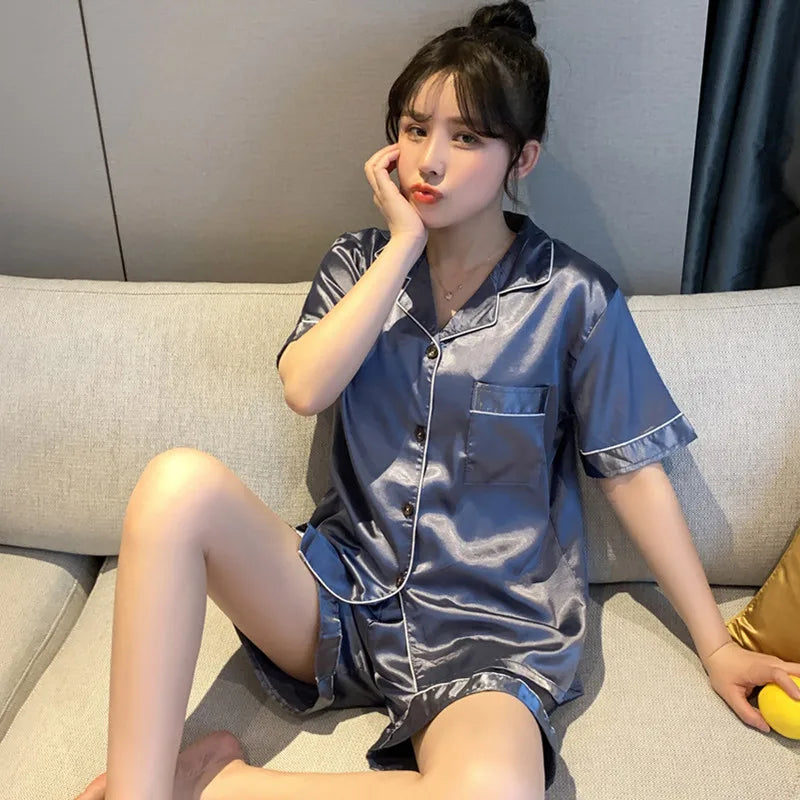The Fascinating History of Pajamas: When Were They Invented?
Table of Contents
- Introduction
- The Etymology of Pajamas
- The Historical Context of Pajamas
- The Evolution of Pajamas in Western Fashion
- The Cultural Significance of Pajamas
- The Modern Pajama: Style Meets Comfort
- Conclusion
As we slip into our cozy pajamas after a long day, it's easy to take this comforting garment for granted. But have you ever stopped to wonder about the rich history behind pajamas? What led to their evolution from a traditional garment worn in distant cultures to the stylish sleepwear we cherish today? In this exploration, we will delve into the origins of pajamas, their journey through time, and how they have transformed into a staple of modern fashion and comfort.
At Relaxed Nights, we believe in the beauty of comfort and elegance, which is why understanding the roots of our beloved nightwear can enhance our appreciation for it. This blog will take you through the historical timeline of pajamas, their cultural significance, and the various styles that have emerged over the years. By the end of this post, you’ll not only know when pajamas were invented but also how they became an essential part of our nightly routines.
Introduction
Picture this: After a hectic day filled with responsibilities, you finally get to return home, where you can unwind in your favorite pair of pajamas. This moment of comfort is universally relatable, and it signifies a transition from the chaos of the day to the tranquility of the night. But have you ever thought about when this comforting tradition began?
The word "pajama," derived from the Hindi term "pai jama," meaning "leg clothing," has roots that trace back centuries. Pajamas were originally loose, flowing garments worn in South Asia and later adopted by Western cultures. This blog will explore the intriguing history of pajamas, shedding light on their evolution from practical clothing to fashionable sleepwear embraced by both men and women.
Throughout this post, we will cover several key aspects: the etymological origins of the word, the cultural practices surrounding pajamas, their introduction to Western society, and the various styles that have emerged over time. This comprehensive overview aims to celebrate the elegance and comfort of pajamas, which we at Relaxed Nights strive to embody in our premium nightwear collection.
So, let’s embark on this journey through history and discover when pajamas were invented and how they have become a cherished part of our lives today.
The Etymology of Pajamas
The term "pajama" has a fascinating etymology that connects us to its cultural origins. The word "pajama" comes from the Hindi word "pai jama," which translates to "leg clothing." This reflects the garment's original design, which consisted of loose-fitting trousers tied at the waist, worn by both men and women across South Asia and the Middle East.
As British colonial influence expanded in the 18th and 19th centuries, the concept of pajamas made its way into Western culture. British colonizers who encountered these comfortable garments in India began adopting them, and by the Victorian era, they had transformed into fashionable sleepwear in Europe and America. The adoption of this term also marked a significant cultural exchange, showcasing how clothing can transcend borders and become a part of global fashion.
The Historical Context of Pajamas
Early Usage in Eastern Cultures
Before pajamas became a staple in Western fashion, they served various purposes in Eastern cultures. In the 13th century during the Ottoman Empire, pajamas were worn as comfortable clothing that allowed for ease of movement. These garments became part of everyday life in places like India and Persia, where they were commonly made from lightweight fabrics suitable for warm climates.
In these regions, pajamas were not merely sleepwear; they represented both comfort and social status. The wealthier classes often wore pajamas made from luxurious materials, while the working classes donned simpler versions. This distinction highlighted how clothing could communicate social standing.
Introduction to the West
The transition of pajamas from the East to the West was gradual. In the 17th century, the garments were introduced in England as "Mogul's breeches," but they did not gain widespread popularity until the Victorian era. It was during this time, around the 1870s, that pajamas began to be recognized as suitable sleepwear for men, marking a significant shift in men's nightwear choices.
Victorian attitudes toward modesty and hygiene played a crucial role in the acceptance of pajamas. As cleanliness became a societal norm, pajamas offered a way to separate daytime clothing from nighttime wear, promoting greater hygiene in the bedroom. This practical function, combined with their stylish appearance, propelled pajamas into the spotlight.
The Evolution of Pajamas in Western Fashion
The 19th Century: A Shift in Sleepwear
By the late 19th century, pajamas were firmly established in the Western wardrobe. Traditional styles consisted of a button-up shirt paired with loose-fitting trousers. These garments were typically made from soft, breathable fabrics such as cotton and flannel, ensuring comfort during sleep.
The introduction of pajamas also coincided with changing gender roles and fashion norms. Men began to embrace the leisure class lifestyle, and pajamas became a symbol of sophistication and relaxation. The upper classes wore them as they indulged in their leisurely activities, marking a departure from more formal nightgowns and robes.
The 20th Century: A Fashion Revolution
The early 20th century saw significant changes in women's fashion, and pajamas were no exception. Designers began experimenting with styles, introducing feminine touches that appealed to women. The 1920s, in particular, marked a turning point as women sought more comfortable and stylish options. Coco Chanel played a pivotal role in this transformation, popularizing the idea of wearing pajamas as glamorous evening attire.
During this decade, pajamas were no longer limited to the privacy of one's home; they became fashionable statements. Silk and satin fabrics replaced cotton, and pajamas began to feature bold colors and intricate designs. Women like Greta Garbo and Joan Crawford were often seen sporting chic pajama sets, further solidifying their status as fashionable nightwear.
The 1930s and 1940s continued this trend, with evening pajamas being suitable for at-home dining and social gatherings. This shift highlighted how pajamas were evolving from mere sleepwear into versatile fashion statements.
The 1960s and Beyond: The Rise of Loungewear
The 1960s brought about a cultural revolution that impacted all aspects of life, including fashion. Women’s liberation movements encouraged women to embrace comfort over traditional gender expectations. Pajamas became a symbol of this newfound freedom, as women began to wear them not only for sleep but also for lounging and casual outings.
Designers responded to this demand by creating unisex styles that blurred the lines between men's and women's pajamas. Baggy flannel pants and simple t-shirts became popular choices, emphasizing comfort and practicality. This era marked the beginning of the loungewear trend, where pajamas were embraced as everyday attire.
As we moved into the 21st century, pajamas continued to evolve, with designers incorporating various styles and materials, from chic loungewear sets to cozy onesies. At Relaxed Nights, we pride ourselves on offering a range of premium nightwear that reflects the elegance and comfort that pajamas have come to symbolize.
The Cultural Significance of Pajamas
Pajamas have become more than just sleepwear; they symbolize relaxation, comfort, and a retreat from the demands of daily life. Their cultural significance can be seen in various contexts:
Pajamas in Popular Culture
Pajamas have made numerous appearances in film and television, often depicted as the ultimate symbol of comfort. Characters are frequently shown wearing pajamas during intimate moments, emphasizing their association with coziness and relaxation. Iconic scenes featuring pajamas have contributed to their appeal, making them relatable to audiences worldwide.
Pajamas as Fashion Statements
In recent years, pajamas have transcended their bedtime function to become fashion statements. Designers have incorporated pajama-inspired styles into runway collections, showcasing how loungewear can be both comfortable and chic. Events like pajama parties and themed sleepovers highlight the fun and social aspects of wearing pajamas, further solidifying their place in contemporary culture.
The Rise of Matching Sets
Matching pajama sets have gained popularity, especially among couples and families. This trend not only promotes a sense of togetherness but also allows individuals to express their personal style. At Relaxed Nights, we offer curated collections of couple sets that reflect our commitment to quality and comfort, encouraging you to embrace relaxation together.
The Modern Pajama: Style Meets Comfort
Today, pajamas are available in an array of styles, fabrics, and fits, catering to diverse preferences and lifestyles. The modern pajama can be both a cozy piece of nightwear and a fashionable outfit for lounging.
Key Features of Modern Pajamas
- Fabrics: High-quality materials like silk, cotton, and modal are commonly used in modern pajama designs. These fabrics prioritize softness, breathability, and comfort, allowing you to relax in style.
- Variety of Styles: From classic two-piece sets to contemporary onesies and nightgowns, the options are endless. This diversity allows individuals to choose pajamas that best suit their personal style and comfort needs.
- Versatility: Many modern pajamas are designed for versatility, allowing wearers to transition seamlessly from bedtime to casual outings. At Relaxed Nights, we understand the importance of this transition and offer stylish pieces that can be worn beyond the bedroom.
- Inclusivity: Pajamas today are designed to be inclusive, catering to various body types and gender identities. This evolution aligns with broader societal movements toward inclusivity and acceptance.
Conclusion
Pajamas have come a long way from their humble beginnings as loose-fitting garments in distant cultures. Their journey through history reflects the changing attitudes toward comfort, style, and gender norms. As we embrace the cozy embrace of pajamas each night, we honor their rich legacy and the comfort they provide.
At Relaxed Nights, we celebrate this legacy through our premium nightwear collection, designed to elevate your experience of comfort and elegance. We invite you to explore our curated collections, where you can find the perfect pair of pajamas that resonate with your personal style and enhance your nightly routine.
FAQ
1. When were pajamas first worn?
Pajamas were first worn as loose-fitting garments in South Asia and the Middle East, with historical records dating back to the 13th century during the Ottoman Empire.
2. How did pajamas become popular in the West?
Pajamas were introduced to the West through British colonial influences in the 18th and 19th centuries, gaining widespread popularity as fashionable sleepwear in the Victorian era.
3. What materials are modern pajamas made from?
Modern pajamas are typically made from high-quality fabrics such as cotton, silk, and modal, prioritizing comfort and breathability.
4. Are pajamas worn only for sleep?
No, pajamas have evolved to be versatile clothing items that can be worn for lounging, casual outings, and even as fashionable statements.
5. How can I choose the right pajamas for my style?
Consider your comfort preferences, fabric choices, and desired style. At Relaxed Nights, we offer a range of options to help you find the perfect pajamas for your needs.
6. Where can I find high-quality pajamas?
You can explore our premium nightwear collection at Relaxed Nights, where we offer a variety of styles and materials to suit your preferences.



